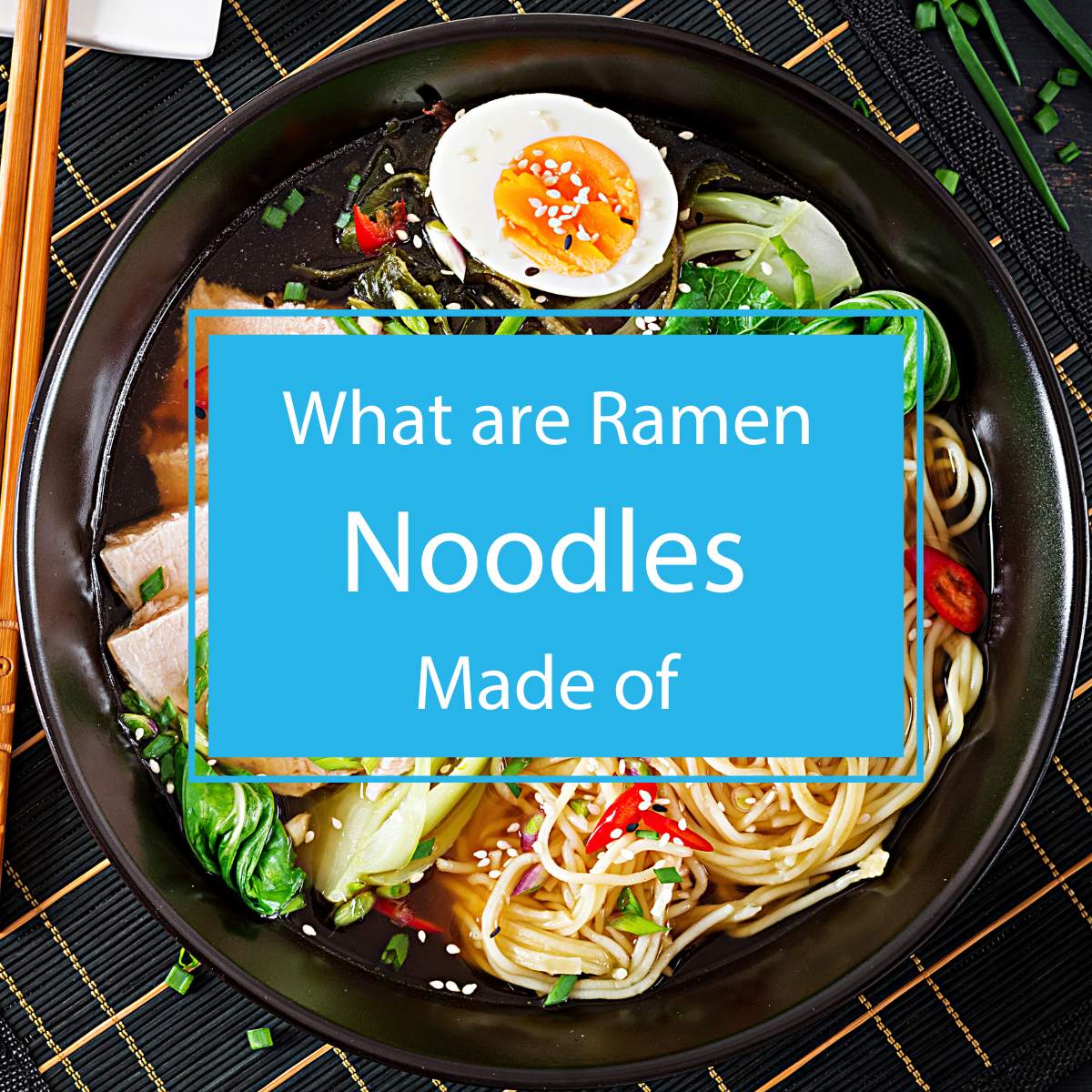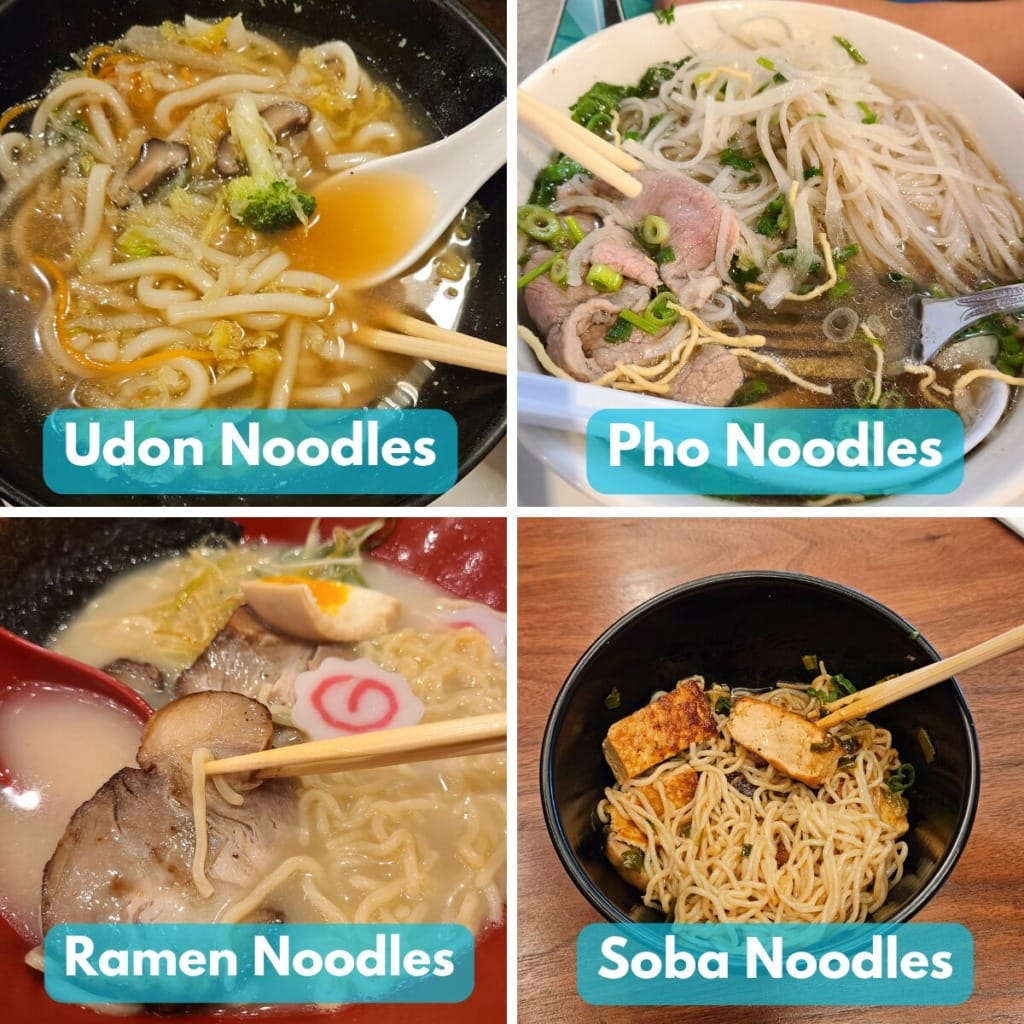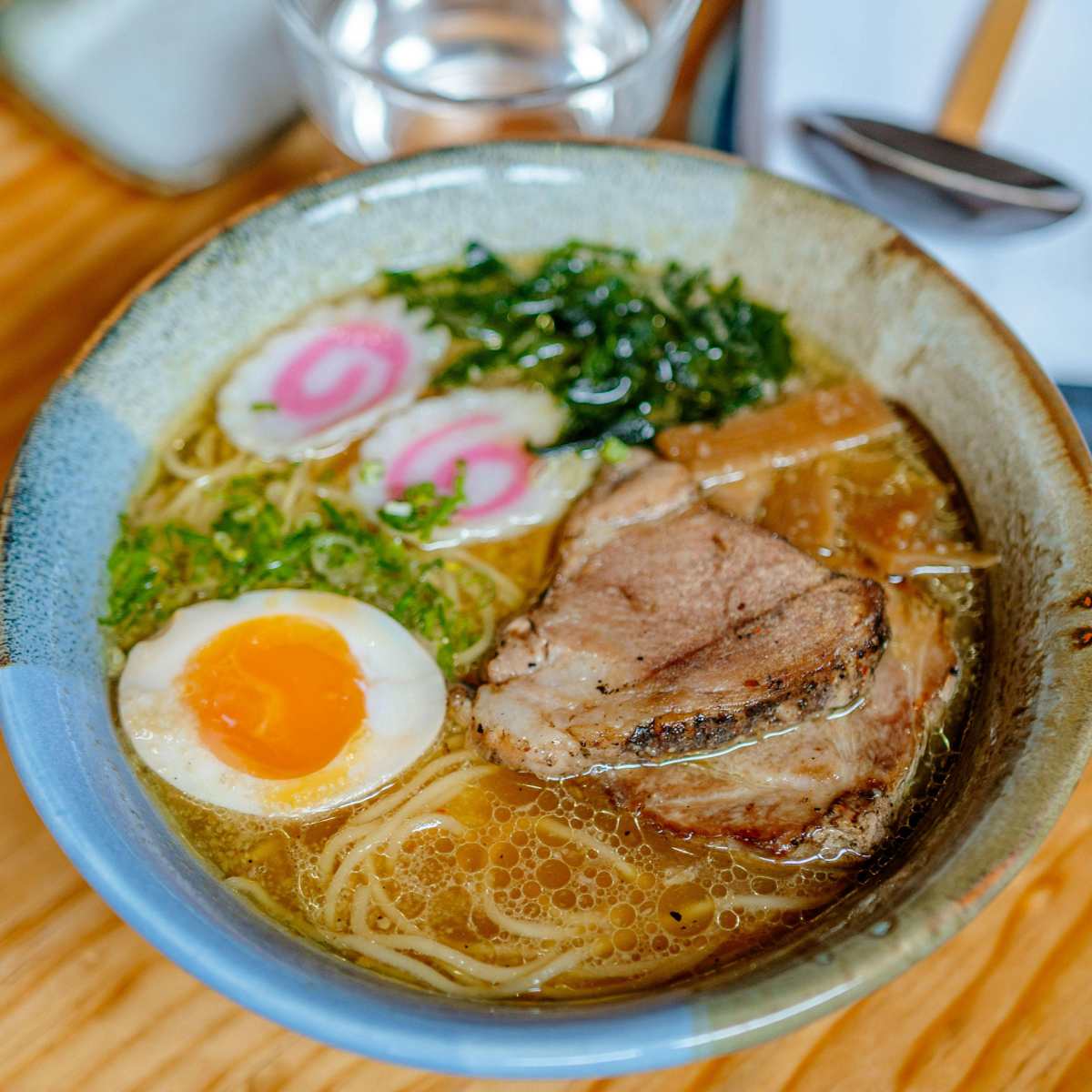Have you ever wondered, “What are ramen noodles made of?” This beloved dish, a staple of Japanese cuisine, has captivated food enthusiasts around the globe with its unique flavors and textures. In this article, we’ll delve into the ingredients and processes that transform simple components into the comforting bowl of ramen we all adore.
We’ll explore the traditional elements like wheat flour, kansui, and the carefully crafted broths that distinguish each type of ramen. Get ready to uncover the secrets behind the making of these delectable noodles and learn why they hold such a special place in culinary cultures worldwide.
What Are Ramen Noodles Made Of?
Have you ever looked into your bowl of ramen and wondered what makes those noodles so special? It’s not just culinary magic—it’s about simple ingredients transformed through clever cooking techniques. Let’s break down what goes into making these popular noodles.
The Basic Components of Ramen Noodles
- Wheat Flour: The primary building block of ramen noodles, wheat flour is crucial for its high gluten content.
- Salt: Added to the noodle dough to enhance flavor, salt also strengthens the gluten in flour, contributing to the noodle’s chewy texture.
- Water: Acts as the hydrating agent to bind the flour and salt into a dough. The quality and temperature of the water can affect the texture of the noodles.
- Kansui: This is the secret ingredient that sets ramen apart from other noodles. Kansui is alkaline mineral water that reacts with the flour, giving ramen noodles their unique chewiness and their signature yellow tint. This alkalinity also ensures that noodles remain firm and don’t turn mushy in hot broth.
The Role of Wheat in Crafting the Noodle
Wheat flour is crucial for ramen, providing the gluten that gives these noodles their elasticity and bite. This gluten allows the noodles to maintain a firm texture, making every slurp satisfying. It’s the backbone of the noodles, essential for that perfect chewy texture we all love in a good bowl of ramen.
Related Article: Delving into the ingredients of ramen noodles might spark your curiosity about another Japanese favorite, yakisoba. Explore our guide on What is Yakisoba for more insights into this savory stir-fried dish.
Ramen vs. Other Noodle Types: Soba, Pho, and Udon
Ramen noodles, crafted from wheat flour, water, salt, and kansui—a mineral water that gives the noodles their characteristic springiness and yellow hue—are a staple in Japanese cuisine. Here’s how their composition and culinary use contrast with other popular noodles like soba, pho, and udon:
- Ramen vs. Soba: While ramen noodles are known for their elasticity and slight chewiness due to the alkaline kansui, soba noodles are made from buckwheat flour, which imparts a nutty flavor and a firmer, grainier texture. Soba can be served chilled with a dipping sauce or in a hot broth, offering a different dining experience from the often richly flavored ramen broths.
- Ramen vs. Pho: Pho noodles are made entirely from rice flour, resulting in a delicate, slippery texture that absorbs the flavors of its accompanying spiced broth. Ramen’s chewy texture and ability to maintain integrity in heavier broths make it distinct from the lighter, more subtle pho.
- Ramen vs. Udon: Udon noodles, also wheat-based but without the kansui, are thicker and chewier than ramen. They typically appear in a milder dashi-based broth, which contrasts with ramen’s often intense, savory broths that are flavored with components like miso, soy sauce, or pork bone.
Understanding the ingredients and preparation of ramen noodles highlights their unique qualities compared to soba’s earthiness, pho’s lightness, and udon’s mild flavor profile, emphasizing the versatility and distinctive appeal of ramen in Asian culinary traditions.
Exploring Ramen Seasonings: Enhancing Flavorful Bowls
Seasonings are essential ingredients in crafting delicious Japanese ramen, turning a simple bowl of noodles into a complex and flavorful experience. Let’s delve into the key seasonings that add depth and richness to this beloved dish:
- Soy Sauce: This is the backbone of many ramen dishes, especially in shoyu ramen. It provides a savory, umami-rich base that enhances the natural flavors of the broth.
- Miso Paste: Used predominantly in miso ramen, this fermented soybean paste adds depth and richness to the broth, offering a hearty, slightly nutty flavor that stands up well to strong toppings like corn, butter, and spicy minced pork.
- Salt In simpler shio ramen, salt is used to highlight the natural sweetness and flavor of the broth without overpowering it. It’s about enhancing, not masking, the flavors of the other ingredients.
- Sesame Oil: A drizzle of sesame oil can add a nutty, aromatic finish to ramen. It’s often used sparingly to accentuate other flavors without dominating them.
- Chili Oil or Spices: For those who prefer a kick, chili oil or a sprinkle of chili flakes can add a pleasant heat that cuts through the richness of the broth, invigorating every spoonful.
- Vinegar: A dash of vinegar can brighten up ramen, adding a subtle tang that complements richer, fattier broths.
Exploring the Ingredients of Ramen Broth
Prepare to delve into the heart of ramen—the broth. Each type of ramen broth not only delights the palate but also reflects a rich culinary heritage and intricate cooking techniques. Let’s explore what makes each ramen broth uniquely delicious.
Miso Ramen: Hokkaido’s Specialty
From the snowy regions of Hokkaido comes miso ramen. This broth integrates the robust flavors of fermented soybean paste with a base of chicken or pork stock, offering a palate-pleasing tanginess and a hint of sweetness. It’s more than just a meal; it’s a spoonful of Hokkaido’s soul in every slurp.
Shoyu: Rich and Savory
Shoyu ramen, known for its soy sauce-infused broth, brings a deep and rich flavor profile to the table. Mixed with chicken or vegetable stock, this type of ramen provides a balanced savory experience that complements the texture of medium-thick, wavy noodles. Shoyu’s complexity makes it a favorite for those who crave a more pronounced flavor in their ramen, with each sip offering a robust umami kick.
Tonkotsu Broth: A Rich Porky Delight
Imagine a broth so rich and robust it hugs your soul! That’s your quintessential tonkotsu broth. It’s made by simmering pork bones for hours until the broth becomes rich in collagen, achieving a milky consistency that’s both hearty and heartwarming. This broth perfectly complements springy noodles, making it a favorite for its profound flavors and velvety texture.
Shio: The Lighter Side of Ramen
Shio ramen stands out for its minimalist approach, featuring a salt-based broth that’s designed to accentuate the natural flavors of its ingredients. This lighter option pairs excellently with straight, thin noodles, allowing the delicate broth to shine without overpowering the dish. Ideal for those who appreciate subtlety in their ramen, shio offers a clear, soothing taste that’s comforting and refined.
| Region | Broth | Noodle Type | Signature Topping |
|---|---|---|---|
| Hokkaido | Miso | Thick and curly | Butter and corn |
| Tokyo | Shoyu (soy sauce) | Medium-thick and wavy | Bamboo shoots |
| Kyushu | Tonkotsu (pork bone) | Thin and springy | Braised pork belly |
| Osaka | Shio (salt-based) | Thin and wavy | Marinated egg |
Related Article: While discovering the ingredients that make up ramen noodles, you might also wonder how it compares to another popular noodle soup, pho. Check out our article on Pho vs Ramen for insights into these two iconic dishes.
The Crucial Role of Toppings in Ramen
Diving into a bowl of ramen isn’t just about enjoying the noodles and broth; it’s the toppings that complete the experience, bringing texture, flavor, and visual appeal to every bite. Let’s explore the essential toppings that turn a simple bowl of ramen into a gourmet meal.
Chashu
Chashu, or braised pork belly, is a beloved topping for its tender, melt-in-your-mouth texture. It not only adds a rich, smoky flavor to the broth but also serves as a succulent centerpiece in the dish.
Menma
These seasoned bamboo shoots bring a delightful crunch that contrasts beautifully with the softness of the noodles. It’s an essential element for adding complexity and a refreshing bite to the bowl.
Nori
Nori sheets add a subtle oceanic flavor that complements the umami richness of the broth. Positioned like sails in the soup, they bring a hint of the sea to your ramen.
Ajitama
A marinated soft-boiled egg, Ajitama is crucial for its texture and flavor. Cutting into the egg reveals a creamy, rich yolk that mixes into the broth, adding depth and richness with every spoonful.
Conclusion
As we’ve discovered, the art of making ramen noodles involves much more than just mixing flour and water. From the crucial role of kansui to the intricate preparation of various broths and the thoughtful assembly of toppings, each aspect contributes to the unique character and appeal of ramen.
Whether it’s the springy texture of the noodles or the rich depth of the broth, every detail is honed to perfection. We hope this exploration enhances your appreciation for this culinary delight and inspires you to explore the rich diversity of ramen further. Next time you savor a bowl of ramen, remember the intricate craftsmanship that brings this simple yet profound dish to life.
FAQ
Can ramen noodles be made gluten-free?
Traditional ramen noodles contain gluten, but gluten-free options can be made using alternative flour like rice flour or buckwheat.
How do you achieve the perfect texture in ramen noodles?
The perfect texture is achieved by precisely mixing and kneading the dough and then adjusting the boiling time according to the thickness and style of the noodles.
Are ramen noodles the same as instant noodles?
No, while instant noodles were inspired by ramen, they are precooked and dried, whereas ramen noodles are typically fresh or air-dried and require cooking.
Instant ramen is everywhere, but how did it start and how does it differ from its fresh ancestor?
Born from the ingenious mind of Momofuku Ando, instant ramen revolutionized the art of noodle convenience. While it can’t mimic the fresh noodle’s dance of flavors and textures, instant ramen brings a delightful, easy-peasy ramen experience to tables worldwide; just add hot water and voila!





